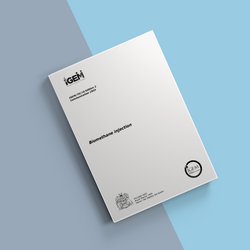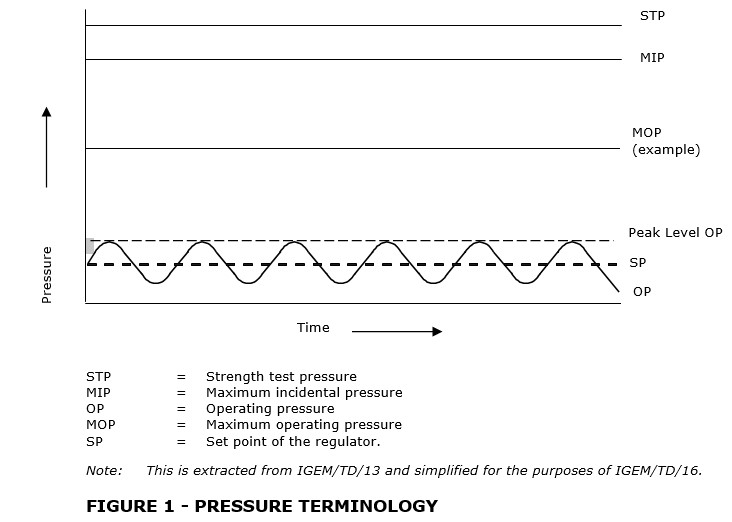IGEM/TD/16 Edition 2 - Biomethane injection

There is a need for guidance on the injection of biomethane into the Natural Gas distribution network. Work undertaken by the Energy Market Issues for Biomethane Working Group has led to production of a report on which the guidance in this Standard is based. This Standard provides requirements to be met by parties who are considering injection of biomethane into the network.
This Standard covers the requirements for design, construction, installation, inspection, testing, operation maintenance and de-commissioning of Grid Entry Units (GEUs). Upgrading Plants (UP) are outside the scope of this Standard, however, consideration of the UP and its impact on the design and operation of the GEU may be appropriate.
Introduction
1.1 This Standard supersedes IGEM/TD/16 edition 1, Communication 1768, which is now obsolete.
1.2 This Standard has been drafted by a Panel appointed by the Institution of Gas Engineers and Managers’ (IGEM’s) Gas Transmission and Distribution Committee, subsequently approved by that Committee and published by the authority of the Council of the Institution.
1.3 Biomethane is a gas comprising principally methane, obtained from either upgrading of biogas (i.e. CO2 removal) or bio-syngas (i.e. methanation). Biogas is a gas, comprising principally methane and carbon dioxide, obtained from the anaerobic digestion of biomass. Bio-syngas is a gas, comprising principally carbon monoxide and hydrogen, obtained from gasification of biomass. Biomass is any biological material from living, or recently living organisms, typically this may be plants or plant-derived materials.
1.4 There is a need for guidance on the injection of biomethane into the Natural Gas (NG) distribution network. Work undertaken by the Energy Market Issues for Biomethane (EMIB) Working Group has led to production of a report on which the guidance in this Standard is based. This Standard provides requirements to be met by parties who are considering injection of biomethane into the network.
1.5 This Standard makes use of the terms “must”, “shall” and “should” when prescribing particular requirements. Notwithstanding Sub-Section 1.6:
- the term “must” identifies a requirement by law in Great Britain (GB) at the time of publication
- the term “shall” prescribes a requirement which, it is intended, will be complied with in full and without deviation
- he term “should” prescribes a requirement which, it is intended, will be complied with unless, after prior consideration, deviation is considered to be acceptable.
Such terms may have different meanings when used in Legislation, or Health and Safety Executive (HSE) Approved Codes of Practice (ACoPs) or guidance, and reference needs to be made to such statutory Legislation or official guidance for information on legal obligations.
1.6 Notwithstanding Sub-Section 1.5, this Standard does not attempt to make the use of any method or specification obligatory against the judgement of the responsible engineer. Where new and better techniques are developed and proved, they are to be adopted without waiting for modification of this Standard. Amendments to this Standard will be issued when necessary and their publication will be announced in the Journal of the Institution and other publications as appropriate.
1.7 The primary responsibility for compliance with legal duties rests with the employer. The fact that certain employees, for example “responsible engineers”, are allowed to exercise their professional judgement does not allow employers to abrogate their primary responsibilities. Employers are required to:
- have done everything to ensure, so far as is reasonably practicable, that there are no better protective measures that can be taken other than relying on the exercise of professional judgement by “responsible engineers”
- have done everything to ensure, so far as is reasonably practicable, that “responsible engineers” have the skills, training, experience and personal qualities necessary for the proper exercise of professional judgement
- have systems and procedures in place to ensure that the exercise of professional judgement by “responsible engineers” is subject to appropriate monitoring and review
- not require “responsible engineers” to undertake tasks which would necessitate the exercise of professional judgement that is not within their competence. There are to be written procedures defining the extent to which “responsible engineers” can exercise their professional judgement. When “responsible engineers” are asked to undertake tasks which deviate from this, they are required to refer the matter for higher review.
Note: The responsible engineer is a suitably qualified, competent and experienced engineer or a suitably qualified, competent and experienced person acting under his or her supervision, appointed to be responsible for the application of all or part of this Standard.
1.8 Materials and the techniques of construction and operation are constantly being improved and it is intended to keep this Standard under review.
1.9 It is now widely accepted that the majority of accidents in industry generally are in some measure attributable to human as well as technical factors. People who initiated actions that caused or contributed to accidents might have acted in a more appropriate manner to prevent them.
To assist in the control of risk and proper management of these human factors, due cognisance is to be taken of HSG48 and HSG65.
1.10 Requests for interpretation of this Standard in relation to matters within their scope, but not precisely covered by the current text, are to be addressed to Technical Services, IGEM, IGEM House, High Street, Kegworth, Derbyshire, DE74 2DA, or emailed to [email protected] and will be submitted to the relevant Committee for consideration and advice, but in the context that the final responsibility is that of the engineer concerned. If any advice is given by or on behalf of IGEM, this does not imply acceptance of any liability for the consequences and does not relieve the responsible engineer of any of his or her obligations.
1.11 IGEM has adopted the terms and definitions used in European standards for pressure, such as maximum operating pressure (MOP), operating pressure (OP), maximum incidental pressure (MIP) and strength test pressure (STP). Figure 1 explains these terms. Further guidance can be found in IGEM/TD/13.

1.12 This Standard was published in November 2019.
Scope
2.1 This Standard covers the requirements for design, construction, installation, testing, commissioning, operation, maintenance, modification and de-commissioning of Grid Entry Units (GEUs) (See Figure 2). Upgrading Plant (UP) are outside the scope of this Standard, however, consideration of the UP and its impact on the design and operation of the GEU may be appropriate.
2.2 GEU allows entry of biomethane into a gas network. Although biomethane is largely methane and has properties broadly similar to those of NG, additional steps may be required before it can be admitted into the network. Typically a GEU may be required to perform:
- Enrichment with Liquefied Petroleum Gas (LPG) (typically commercial propane). This may be required so as to ensure that the biomethane meets the Wobbe Index (WI) and calorific value (CV) requirements of the Gas Transporter (GT), as set out in the Network Entry Agreement (NEA).
- Pressure control.
Biomethane pressures may vary and will require suitable controls to be put in place for entry into the network.
Note: Pressure regulating installations (PRIs) are covered in IGEM/TD/13. - Flow management.
This may be required if a specified flowrate of biomethane into the network is required, or if blending of biomethane with NG is required in order to satisfy (or partially satisfy) the WI and CV requirements of the GT, as set out in the NEA. - Metering.
The daily quantity of biomethane injected is required for commercial purposes, Regulatory purposes pertaining to the calculation of area calorific value, and for application of any government incentives.
Note: Metering installations are covered in IGEM/GM/8. - Gas analysis.
This is required for the determination of calorific value and demonstration of compliance with the gas quality requirements of the GT, as set out in the NEA. - Odorant injection.
This may be a regulatory requirement and will be stipulated by the GT, as set out in the NEA.
Note: Odorant systems are covered in IGEM/SR/16. - Telemetry.
This is required for monitoring GEU operation, and for closure of a Remotely Operated Valve (ROV). In addition, operational data may need to be transferred at the end of the gas day. - Rejection of off-specification gas.
This typically employs a diverter valve arrangement to redirect off-specification gas to prevent entry into the gas network.
2.3 All references to gas pressure are gauge pressure, unless otherwise stated.
2.4 Unless stated otherwise all volumes are for the real dry gas at ISO standard reference conditions of 15°C and 1.01325 bar abs.
2.5 Unless stated otherwise all energies are calculated using a gross calorific value for the real dry gas at ISO reference conditions of 15°C (combustion) and 15°C and 1.01325 bar abs (metering).
2.6 Italicised text is informative and does not represent formal requirements.
2.7 Appendices are informative and do not represent formal requirements unless specifically referenced in the main sections via the prescriptive terms “must”, “shall” or “should”.
